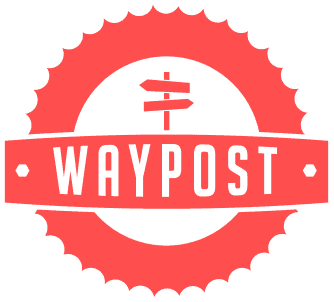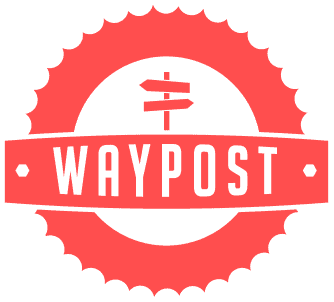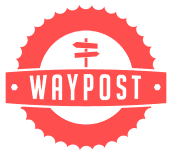Try to think of your business’s tech stack as an orchestra. Each instrument contributes to the overall harmony, and when all the instruments are in tune and working together, the result is a smooth, efficient, and powerful symphony. However, the entire performance suffers if just one instrument is out of sync or doesn’t harmonize with the others.
A fragmented tech stack is like an orchestra where the instruments don’t play well together, creating dissonance instead of harmony. The musicians (your employees) are confused and upset, the audience (your customers) are dissatisfied, and ultimately, the business bears the brunt.
What does this lack of coordination look like business-wise?
Strain on All Fronts: Time, Productivity, Money
A fractured tech stack is more than an inconvenience; it significantly drains your organization’s resources. Time wasted, decreased productivity, and higher costs are just the beginning. Each inefficiency in your business technology setup compounds, leading to operational delays, reduced employee satisfaction, and financial strain.
Time
A fractured tech stack is a notorious time thief, robbing your team of precious hours that could be spent on more valuable tasks. When systems don’t communicate seamlessly, it leads to repetitive manual tasks like data entry, slowing operations and increasing the likelihood of errors. This time drain affects multiple aspects of your business operations and customer satisfaction.
- Administrators waste an average of 4 hours weekly helping sales reps access and use tools.
- 80% of sales reps waste time trying to track multiple login credentials for different tools.
- 25% of sales reps said updating Salesforce or another CRM takes time away from selling.
Productivity & Operational Efficiency
The impact of a fractured tech stack on productivity and operational efficiency is staggering. Team members need help with tool management and usage, leading to confusion, missed targets, and non-converting workflows. This fragmentation creates a ripple effect across the organization, particularly impeding sales and marketing alignment and hindering cross-departmental collaboration:
- 86% of reps need clarification about which tools to use for which task, leading to missed quotas.
- 46% of marketers dedicate more time to preparing and segmenting data than any other task.
- Over 78% of businesses admit that their teams struggle to share data effectively.
Money
Last but not least, a fractured tech stack is a financial burden. The cost of managing a multiple-point solution adds up quickly (training, maintenance, IT support, integration costs, etc.), leading to a higher Total Cost of Ownership (TCO). Companies using multiple-point solutions spend significantly more than those with a streamlined tech stack:
- Companies using 2-5 point solutions face a total TCO that is 1.9 times higher than those using a single, integrated solution.
- Organizations with more than 11-point solutions have a TCO 2.5 times higher than companies using only one solution.
- Inaccurate sales forecasting due to incomplete and disconnected data leads to revenue forecasting errors.
Setbacks by All Departments
The impact of a fragmented tech stack isn’t confined to general operational inefficiencies; it permeates every department within an organization. Each team faces unique challenges that stem from disjointed systems and processes. This issue particularly hinders two revenue-driving departments: sales and marketing.
Sales reps spend 41% of their workday not selling, primarily because they need to navigate an overwhelming web of 13-point solutions. This tool mix—many of which have overlapping functionalities, are too complex to operate, or are no longer relevant—takes away valuable time, limits the reps’ ability to reach their sales goals, creates frustrations, and slows growth. Finance-wise, these inefficiencies translate into an estimated 38% of lost quarterly revenue.
The consequences of a fragmented tech stack are just as detrimental in the marketing department. Wasted marketing technology (MarTech) has emerged as one of the top three weaknesses self-reported by CMOs. Interestingly, despite a double-digit increase in martech investments, the utilization of these tools has seen a corresponding decline. This inverse relationship between spending and usage is primarily driven by the stack’s complexities and data silos within the organization.
What If You Better Aligned Your Tech Stack?
In today’s digital landscape, tech stacks have become integral to daily business operations, promising to streamline processes, save time, and improve outcomes. However, businesses often need help with the opposite effect when these tech stacks grow carelessly.
So what if, instead of managing numerous redundant tools, you “declutter” your tech stack with a consolidated, more strategic, and better-aligned tech stack tailored to your specific needs? This new approach will allow you to get more value from your tech stack:
The Power of Alignment
87% of sales and marketing leaders agree that better collaboration between these two departments, enabled by smoother digital alignment, is crucial for business growth. Businesses with solid sales and marketing alignment:
- Are 67% more effective at closing deals.
- Are 58% more effective at retaining customers.
- Achieve up to 38% higher sales win rates.
- Drive 208% more revenue as a result of their marketing efforts.
- Realize 27% faster three-year profit growth.
The Power of Consolidation
When CRM tools are consolidated into a single platform:
- 42% of companies report excellent data connectedness.
- Companies can see 2.7x higher ROI from their tech stack.
These numbers speak volumes about the advantages of a well-aligned tech stack. By consolidating your tech stack, you position your business to capitalize on these tools’ capabilities, driving operational efficiency and significant revenue growth.
The HubSpot Solution — Less is More
At Waypost Marketing, we’ve witnessed firsthand the challenges businesses face with fragmented tech stacks. Through our experiences and those of our clients, we’ve discovered a powerful solution in HubSpot.
HubSpot provides a suite of six robust HubSpot Hubs that integrate seamlessly with a unified CRM to enhance their impact further. By adopting HubSpot’s connected platform, businesses can enjoy HubSpot benefits like overcoming disconnection, boosting adoption, increasing productivity, and accelerating growth. HubSpot’s all-in-one approach equips you with everything needed to better serve your customers — all while delivering superior value to your business.
Each HubSpot product is powerful on its own, but the real magic happens when you use them together:
- With a user-friendly, connected platform, your team can get up and running quickly, helping you achieve ROI sooner.
- Customers have seen a 61% increase in closed deals within six months of implementing the integrated Marketing and Sales Hubs.
- Compared to Salesforce, the estimated cost savings with HubSpot can exceed $100,000.
Check out our HubSpot ROI calculator and HubSpot TCO Calculator to better understand what adopting HubSpot means for your business.
Get More from Your Tech Stack
Businesses that prioritize aligning their business technology tools are more likely to realize the total value of their investments. A well-integrated tech ecosystem enhances operational efficiency, provides more precise insights, and facilitates better decision-making, which is no less important in our modern competitive markets.
At Waypost Marketing, we have been a HubSpot Solutions Partner since 2014, and our expertise in HubSpot allows us to help you maximize the potential of your tech stack. As a dedicated HubSpot agency, we are well-equipped to guide you through the integration process and optimize your tools for greater marketing success. Contact us to learn how we can assist you in achieving your business goals through effective tech stack alignment.










